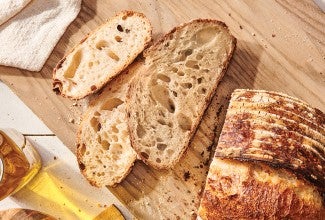Debunking the biggest sourdough myths
When it comes to sourdough, there’s a lot of confusion out there.
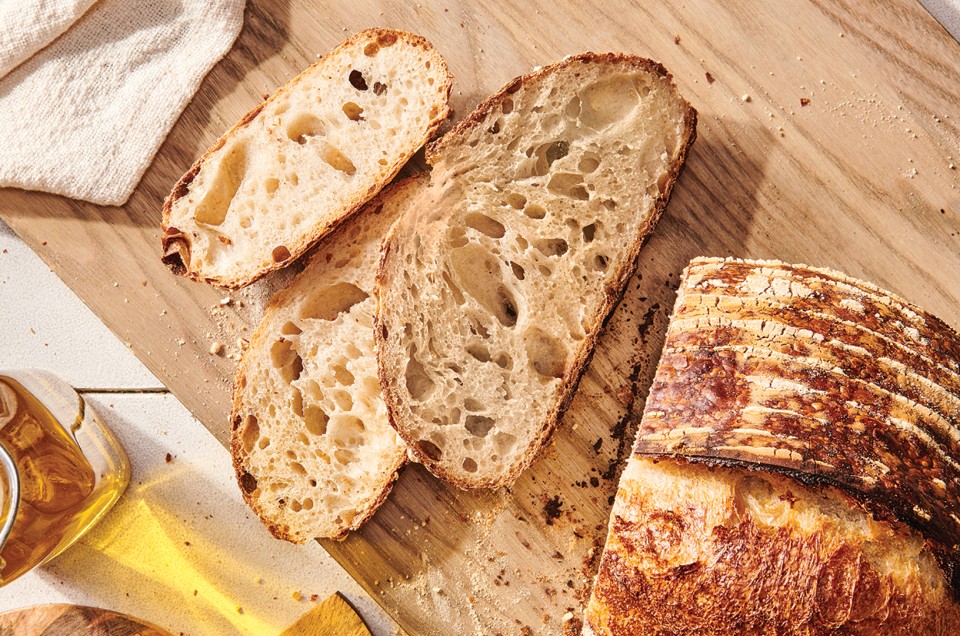

When you first begin to bake with sourdough starter, the learning curve feels steep. You go online for information and are quickly overwhelmed not just by the amount of potential reading, but also the innumerable conflicting “facts.”
It’s a lot to absorb! That’s why we’re here to bust some of the most common sourdough myths out there — and replace them with sensible, vetted advice for your sourdough baking, based on our extensive experience. So, take a deep breath and relax: Sourdough is supposed to be fun, not stressful.
Baking with sourdough doesn't have to be complicated. Yes, there are some recipes involving preferments, multiple days of fermentation, and a strict schedule. But sourdough can also be incredibly straightforward — witness our beginner-friendly recipe for Basic Sourdough Bread, a high-rising, nicely tangy sandwich loaf.

It's true that sourdough baking can become a lifelong quest for that one perfect loaf. But it can also focus on a passion for the process itself, as you learn how to care for your starter and use it in all kinds of recipes, from crusty artisan-style loaves to simple pancakes or even chocolate chip cookies. Ultimately, sourdough can be simpler and more forgiving than you may realize. And the best way to get good at it is to start.
“I love San Francisco sourdough bread. Do I need to get my starter from San Francisco?” Not at all! No matter where your original starter comes from, it quickly morphs into your own brew, one inoculated with the natural bacteria and cultures found in your neighborhood. And bread flavor isn’t determined by where your starter was originally born, but by how you build and maintain that starter — as well as by the recipe you choose. For instance, typically a recipe that calls for chilling the dough overnight (or longer) before baking will produce a tangier loaf.
Is sourdough starter like fine wine, getting better with age? No. A regularly fed starter is constantly being refreshed, with a portion of the original being removed and replaced with new flour and water; this feeding keeps your starter healthy and active. As a result, an “old” starter — one you created 20 years ago, and have fed faithfully — contains no physical trace of that first starter.
Ultimately, how many months or years your starter has been alive has no real impact on the quality of your bread; what’s most important is how well you maintain your starter, and by extension, how healthy and active it is.
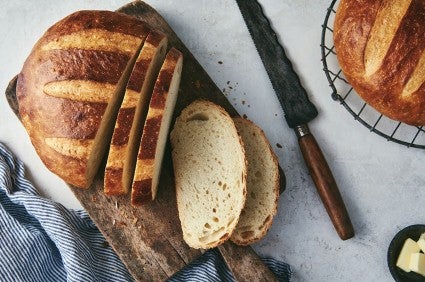
While sourdough purists say “true” sourdough is leavened solely with its starter and never includes commercial yeast, the bottom line is there are no sourdough police out there laying down the law.
Yes, you can challenge yourself to raise your sourdough loaf solely with starter. But if you just can’t seem to get the rise you want, it's fine to add some packaged yeast, as we do with these recipes for Rustic Sourdough Bread and Merlin’s Magic Sourdough Bread. Your goal is great-tasting bread, no matter how you arrive there.
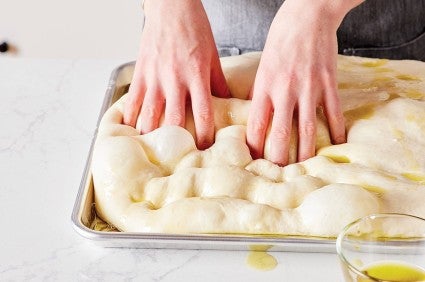
The typical sourdough loaf you see online is a crusty golden round, full of irregular holes and featuring a signature peaked “ear” on top, as in classic Pain de Campagne.
But you can also use your starter to make many different kinds of bread, like soft whole wheat sandwich bread, Sourdough Focaccia, and even sweet and tangy Cinnamon Raisin Sourdough Bread. You don’t need a particular pan or special tools to bake great sourdough bread; all you need is starter, flour, water, and a recipe you love.
Some bakers believe that water treated with chemicals (e.g., tap water from a municipal system) may inhibit the growth of beneficial bacteria in your starter. But given the variables (type and concentration of chemicals, kinds of beneficial bacteria found in your starter) it’s difficult to make a hard connection between chemicals and starter health. Given the minimal effect chemicals like chlorine may ultimately have, many bakers (including those in the King Arthur Test Kitchen) simply use tap water. So go the extra mile and use “pure” water, if you like, but it’s really not necessary.
And what about hard vs. soft water? Again, the impact of hard vs. soft water is pretty minimal — so unless your water is off-the-chart hard or soft, don’t worry about it.
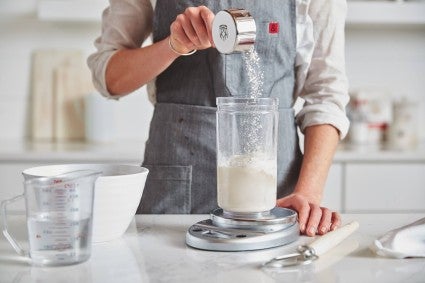
Feeding your starter every 12 hours means it’s ready for you to bake with it at nearly a moment’s notice. But if you’re not baking with your starter multiple times a week, it’s fine to store it in the fridge and simply feed it once a week. If you follow a weekly feeding schedule, leave yourself a day or so for a couple of room-temperature feedings to get it fully activated before baking. Either way — be sure to cover your starter between feedings; a lidded glass or plastic container works well. Just be sure the cover isn't tightened all the way down, as you want to give your starter some breathing room while it rests.
Another common myth: If you don’t feed your refrigerated starter at least once a week, it’ll die. Truthfully, it’s very hard to kill your starter. Even if you haven’t fed your starter for weeks and it looks awful (black liquid or a wrinkled skin on top), it’ll probably be fine once you feed it. For more on neglected starter, see What if I forgot to feed my starter?
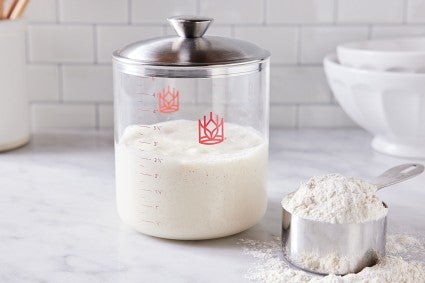
Aside from using a metal that reacts to acidic ingredients (e.g., uncoated cast iron, copper, or aluminum), any tool, bowl, or container you choose will be fine. In fact, most bakeries use only plastic or metal tools and containers.
Most bakers prefer to use a clear glass or plastic container for feeding and storing their starter, since those offer such an easy visual of the starter’s growth and health. But go ahead and use stainless steel mixing bowls and your favorite silicone spatula; they won’t bother your starter (or dough) at all.
While it seems to make sense, the float test is simply too unreliable a method for determining if your starter is healthy and active enough to use. It’s better to simply track the progress of your fed starter in its bowl or container; if it’s doubled in size in eight hours or less, it’s ripe and ready to go.
Are you ready to start baking with sourdough, but don’t want to spend days (potentially weeks) building your starter from scratch? King Arthur’s fresh starter is a simple, reliable way to jump-start your sourdough baking.
Cover photo (Vermont Sourdough) by Danielle Sykes.
